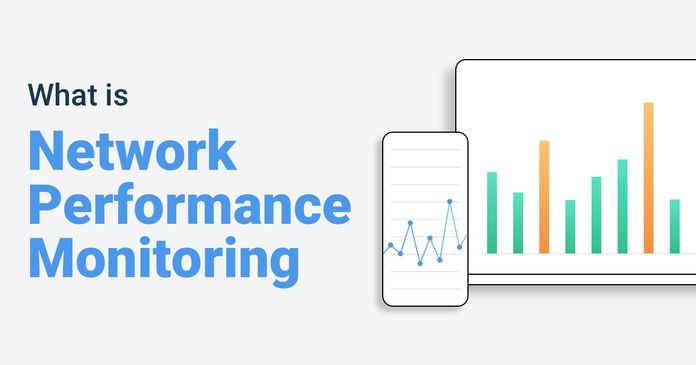Table of Contents
Table of Contents
Whether you're an IT professional, a network administrator, or a technology enthusiast, understanding and monitoring network performance is crucial to maintaining reliable and efficient connections. This is where network performance reporting comes into play.
In this blog post, we will delve into the world of network performance reporting, focusing specifically on the benefits, features, and practical implementation using Obkio, a powerful network monitoring and analysis tool. Whether you're new to network performance reporting or looking to enhance your existing practices, this article will provide you with valuable insights and actionable steps to navigate this essential aspect of network management.
Let's embark on this journey together and unlock the full potential of network performance reporting!
Network performance reports are comprehensive summaries or analyses of the performance metrics and data collected from a network. These reports provide valuable insights into the health, efficiency, and overall performance of a network infrastructure. They offer a detailed overview of various performance indicators, such as latency, packet loss, throughput, jitter, and other relevant network parameters.
Network performance reports typically present data in a structured and visual format, making it easier for network administrators, IT professionals, and decision-makers to interpret and analyze the information. These reports often include charts, graphs, tables, and other visual representations that allow for quick identification of network issues, trends, and patterns.
The purpose of network performance reports is to help organizations monitor, measure, and optimize the performance of their networks. By regularly generating and reviewing these reports, network administrators can identify areas of concern, troubleshoot problems, and make informed decisions to improve network performance. Network performance reports can also be used for capacity planning, resource allocation, and assessing the impact of changes or upgrades to the network infrastructure.
Moreover, network performance reports play a crucial role in providing insights for service-level agreements (SLAs) between network service providers and their clients. These reports serve as evidence of network performance compliance and help in resolving disputes or addressing service quality issues.

Network performance reporting provides organizations with valuable advantages in managing and optimizing their networks. Let's discover the benefits that network performance reporting brings to your organization's network management efforts.
- Troubleshooting and Issue Resolution: Network performance reports provide valuable insights into the performance metrics of a network, enabling administrators to identify and troubleshoot issues promptly. By analyzing the data, administrators can pinpoint the root causes of problems such as latency, packet loss, or bandwidth congestion, and take appropriate measures to resolve them. This helps in minimizing downtime and maintaining a smooth network operation.
- Proactive Network Management: Network performance reports facilitate proactive network management by allowing administrators to detect potential bottlenecks and performance degradation before they impact users. By regularly monitoring and analyzing network performance, administrators can anticipate issues, make informed decisions, and implement preventive measures to optimize network performance and ensure a seamless user experience.
- Capacity Planning and Resource Allocation: Network performance reports provide valuable insights into network utilization and resource allocation. By analyzing these reports, administrators can identify peak usage periods, anticipate future demands, and plan network capacity accordingly. This helps in optimizing resource allocation, avoiding network congestion and network overload, and ensuring that the network infrastructure can support current and future requirements.
- Performance Benchmarking: Network performance reports enable organizations to establish performance benchmarks and track their progress over time. By comparing current performance metrics against historical data or industry standards, administrators can assess the effectiveness of network optimization efforts and identify areas for improvement. Benchmarking helps in setting goals, evaluating performance against targets, and continuously enhancing network performance.
- Data-Driven Decision Making: Network performance reports provide administrators with quantitative data and visual representations of network performance. This data-driven approach enables informed decision making, as administrators can rely on accurate and objective information to evaluate network performance, justify infrastructure investments, and prioritize optimization efforts. It reduces the reliance on assumptions or guesswork, leading to more effective and efficient network management.
- Compliance and Service-Level Agreement (SLA) Monitoring: Network performance reports serve as evidence of network compliance and adherence to SLAs between network service providers and clients. By generating and reviewing these reports, organizations can ensure that service providers meet agreed-upon performance targets and address any potential deviations. Network performance reports provide a transparent and verifiable record of network performance, facilitating effective communication and dispute resolution.
In summary, network performance reporting offers benefits such as efficient troubleshooting, proactive management, capacity planning, performance benchmarking, data-driven decision making, and compliance monitoring. These advantages contribute to a reliable and optimized network infrastructure, improved user experiences, and alignment with business objectives.
Learn about network performance monitoring to optimize network performance. Discover key network metrics, tools & techniques & the benefits for businesses.
Learn more

Network Performance Reports are just one of the features that enable you to proactively identify, diagnose, and troubleshoot network issues—even before users experience them - the other, is an end-to-end network monitoring tool!
Obkio's Network Monitoring Tool is a comprehensive solution designed to help organizations monitor and optimize their network performance. With its powerful features and intuitive interface, Obkio simplifies the process of network monitoring and provides valuable insights into network health and performance.
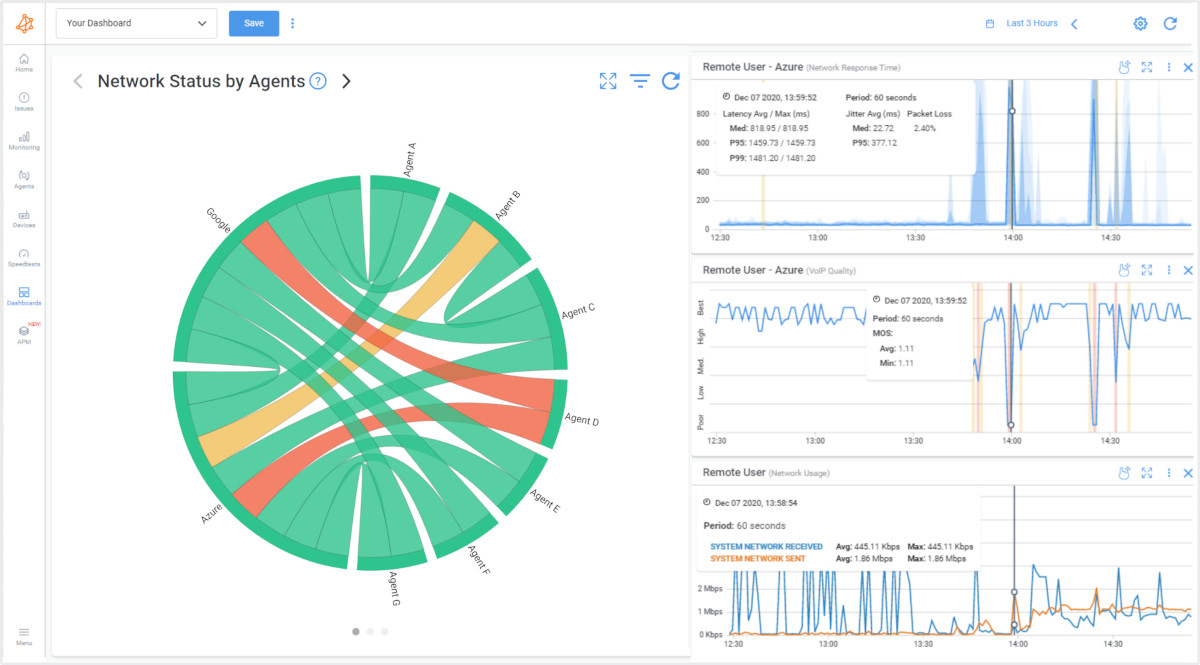

The information you can collect in Obkio Network Performance Monitoring App gives you a precise and continuous view of your network performance. It's perfect for identifying intermittent network performance issues as soon as they happen, and troubleshooting internally or with your Service Provider.
However, when it comes to analyzing data from a long period of time, or from many Monitoring Agents and Monitoring Sessions, there can be too much information all at once.
The information you can collect in Obkio Network Performance Monitoring App gives you a precise and continuous view of your network performance. It's perfect for identifying intermittent network performance issues as soon as they happen, and troubleshooting internally or with your Service Provider.
However, when it comes to analyzing data from a long period of time, or from many Monitoring Agents and Monitoring Sessions, there can be too much information all at once.
Obkio’s Network Performance Reports are the answer.
One standout feature of Obkio is its Network Performance Reporting capability. This feature allows users to generate detailed reports that provide a holistic view of network performance metrics and trends. By leveraging Obkio's reporting feature, organizations gain access to a wealth of information, enabling them to make data-driven decisions and proactively manage their networks.
Obkio makes it easy to understand and analyze your network performance by generating out-of-the-box reports at the click of a mouse!
Obkio’s Reports feature helps you extract and analyze a large amount of data from Obkio’s App all at once. With the reports, you can:
- Summarize Data: There are 4 Report Types available at the moment. Generate reports to view network metrics, show moments of network performance degradation, or highlight network issues.
- Download Reports: Download reports using a public URL. Users don’t need to have a user created in Obkio’s App to download reports.
- Share Reports: Send reports via email to a list of email addresses to send reports to multiple contacts at once.
- Choose A Time-Frame: Display network performance data from a period from a few hours up to a full month. This allows you to
- Schedule Reports: Schedule reports to run and be generated on a daily, weekly or monthly basis. Learn more about Report Schedules.
- Leverage Webhooks: Send Webhooks to automate report processing. Learn more about Webhooks.
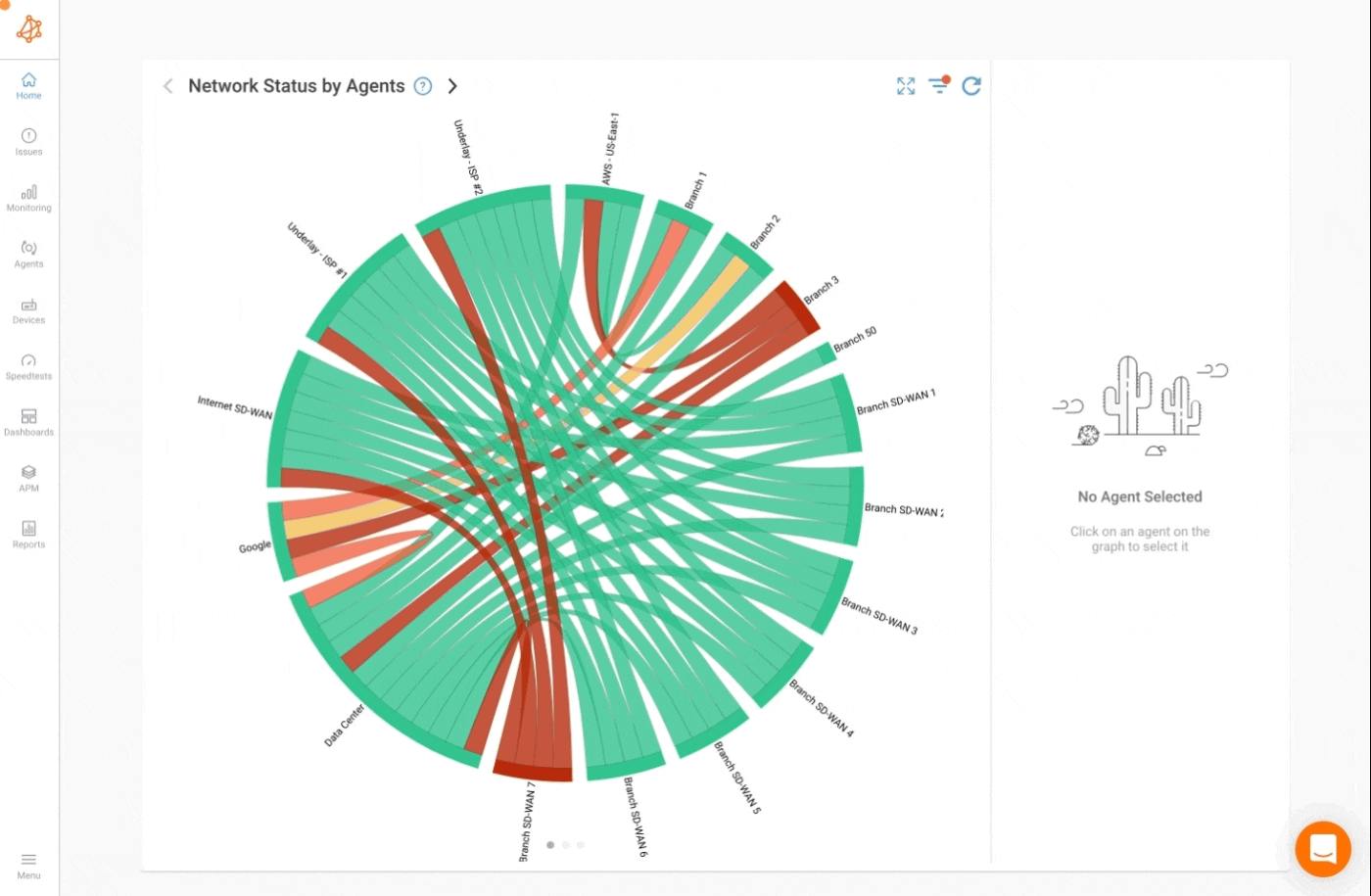
Obkio’s Network Reporting tool is a part of Obkio’s comprehensive network performance monitoring software and is available in Obkio’s Premium & Enterprise Subscription Plans.
For more technical information, learn more in our Report Documentation. Users of Obkio’s Basic Plan can reach out to the Support Team to try the reporting feature.
Obkio's Network Performance Reporting feature offers several benefits. It provides administrators with comprehensive visibility into network latency, packet loss, throughput, and other critical performance indicators. These reports present data in a visually appealing and easy-to-understand format, enabling administrators to quickly identify network issues and take appropriate actions.
Let's dive into the benefits in more detail:
Network performance reporting is an essential part of network performance monitoring.
While network performance monitoring provides real-time performance data for continuous network visibility. But network reporting allows you to collect and analyze specific network performance data in an easily digestible and shareable format.
Obkio's Network Performance Reporting feature offers several benefits. It provides administrators with comprehensive visibility into network latency, packet loss, throughput, and other critical performance indicators. These reports present data in a visually appealing and easy-to-understand format, enabling administrators to quickly identify network issues and take appropriate actions.
Not everyone in your organization is an IT pro using Obkio’s app. But that doesn’t mean you can’t still share information with them!
Obkio’s network performance reports can be used and shared internally to gain important, actionable insights with your team and make quick decisions about your network.
Network performance reporting is also a great network troubleshooting tool! Use and generate reports to share with your Service Provider when you open a support ticket.
When you’re trying to resolve a network problem with your Service Provider, it’s important to provide them with as much information as possible, so they can quickly escalate your case past Level 1 Support. Obkio’s data and reports are perfect for sharing that information.
Using a network performance report, you can quickly make informed decisions about your network’s optimization and health based on both current and historical network performance data and metrics.
It may be hard to convince anyone outside of your team that your organization’s network needs to be optimized. But with a report showing a network problem on your WAN, this could be what you need to convince your Service Provider that the issue is their responsibility to solve.
By examining network reports and viewing capacity usage trends, you may be able to forecast, detect, diagnose, and troubleshoot network issues before complete network outages occur.
Use Obkio’s historical performance data and reports to better understand your organization's resource utilization trends and so you can make proactive decisions about optimizing your IT infrastructure and planning network upgrades.
By analyzing performance trends and utilization metrics, administrators can accurately assess network usage patterns, anticipate future demands, and optimize resource allocation accordingly. This ensures that the network infrastructure is effectively utilized and can support current and future requirements.
Network performance reporting is also critical for monitoring the compliance with service, network or Internet SLAs (service-level agreements).
Many organizations need to ensure they are meeting service-level agreements and quality of service standards, and network performance reports provide a way to gather and view the information for businesses to prove that SLAs are being met, or to prove to your Service Provider that they’re not complying with your service-level agreement.
Obkio's Network Performance Reporting feature also supports the monitoring of service-level agreements (SLAs). By generating regular reports, organizations can assess network performance against predefined SLA targets and ensure compliance with contractual obligations. These reports serve as tangible evidence of network performance, facilitating transparent communication and dispute resolution.
With customizable reports, easily pull and share the right information with specific departments or recipients, either internally or externally.


Now, how can you actually implement these network monitoring and reporting features?
Here's a practical guide to implementing network performance reporting using Obkio, a powerful network monitoring tool. By following these steps, you can leverage Obkio's features and capabilities to collect performance data, configure tests and metrics, generate comprehensive reports, and gain valuable insights into your network's performance.
Learn how to set up Obkio for network monitoring, customize performance tests, generate reports, and analyze the data to optimize your network infrastructure. This step-by-step guide will empower you to effectively implement network performance reporting with Obkio and make informed decisions to enhance your network's performance and reliability.
Ready to unlock the full potential of your network performance reporting? Obkio is here to save the day!
When it comes to implementing network performance reporting, the first step is to set up Obkio, a powerful network monitoring solution. By signing up for an Obkio account and adding network agents to your infrastructure, you can start collecting valuable performance data.
This step-by-step process ensures that you have the necessary tools in place to monitor and optimize your network effectively. Let's dive into the details of setting up Obkio for network monitoring.

- Sign up for an Obkio account and log in to the dashboard.
- Add network agents: Install Obkio's monitoring agents on your network devices at strategic locations to collect performance data.
- Configure agent settings: Customize agent configurations to match your network environment and monitoring requirements.

Once you have set up Obkio for network monitoring, the next step is to configure performance tests and metrics. These tests allow you to measure critical network performance metrics such as latency, packet loss, and throughput.
By specifying test parameters and selecting the appropriate monitoring points, you can tailor the monitoring process to match your specific needs. Let's explore how you can configure performance tests and metrics within Obkio to gather the most relevant data about your network's performance.
- Define performance tests: Set up performance tests within Obkio to measure key network performance metrics such as latency, packet loss, and throughput.
- Specify test parameters: Configure test parameters such as test frequency, test duration, and test endpoints to align with your monitoring needs.
- Select monitoring points: Choose the network agents that will be used to conduct the performance tests and collect data.
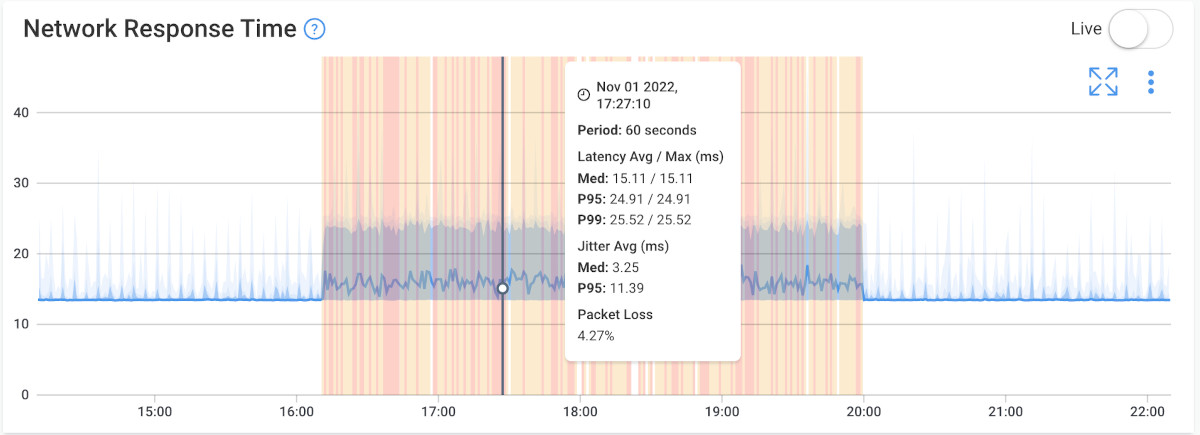
Now that you have collected the necessary performance data, it's time to leverage Obkio's reporting feature to generate insightful network performance reports. These reports provide a comprehensive overview of your network's health, highlighting key metrics and trends.
With customizable report settings, you can focus on the specific time range, reporting period, and metrics that matter most to you. Let's discover how you can generate network performance reports using Obkio's reporting feature.
- Access the reporting feature: Navigate to the reporting section in the Obkio dashboard to access the network performance reporting feature.
- Customize report settings: Select the desired reporting period, time range, and specific metrics to include in the report.
- Generate reports: Initiate the report generation process and wait for the system to compile and generate the network performance report.
- Review the reports: Once the report is generated, review the presented data and metrics to gain insights into your network's performance.
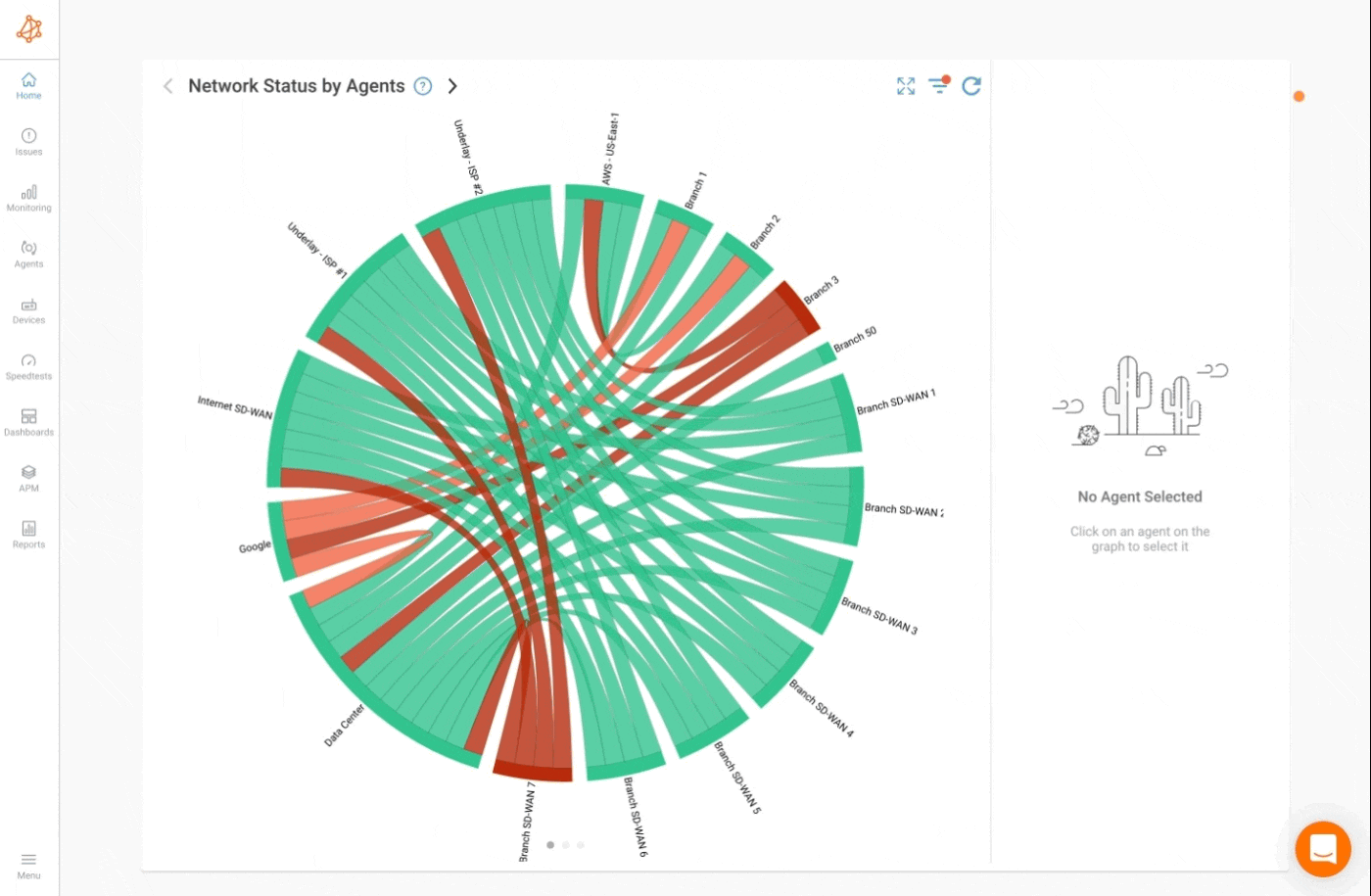
Once you have generated the network performance reports with Obkio, the final step is to interpret and analyze the data presented. These reports offer valuable insights into your network's performance, identifying trends, bottlenecks, and areas for improvement.
By analyzing the data and comparing historical trends, you can make informed decisions to optimize your network's configuration, troubleshoot issues, and enhance overall performance. Let's delve into the process of interpreting and analyzing the network performance reports generated by Obkio.
- Analyze performance trends: Look for patterns and trends in the reported data to identify any recurring or intermittent network problems, performance degradation, or areas of improvement.
- Compare historical data: Compare current reports with historical data to track progress, identify changes, and assess the impact of network optimizations or upgrades.
- Identify performance bottlenecks: Use the reported metrics to pinpoint specific areas where network performance is suboptimal, such as high latency, packet loss, or bandwidth constraints.
- Take actionable steps: Based on the insights gained from the reports, take proactive measures to address identified issues, optimize network configurations, or allocate resources effectively.
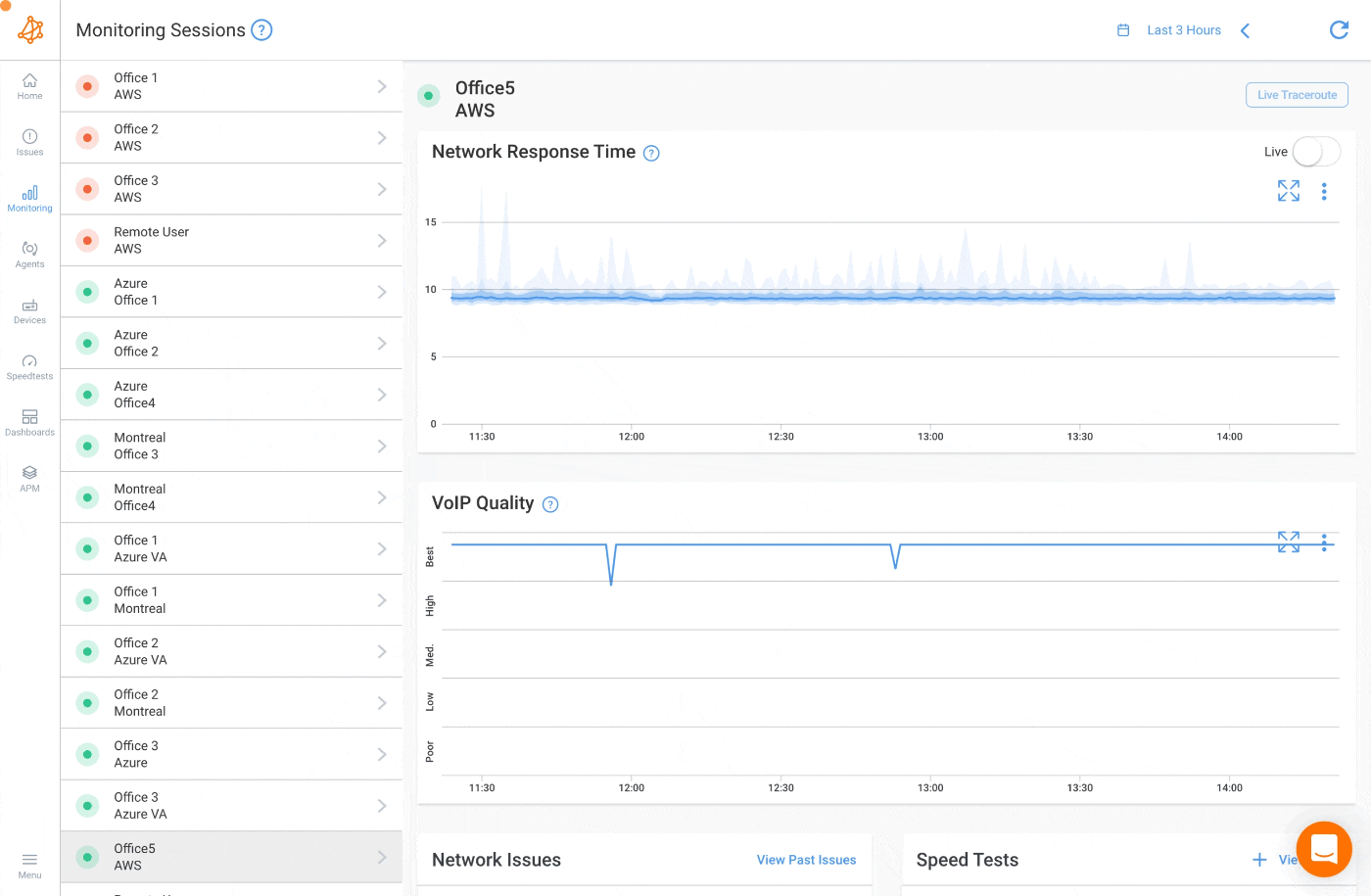
By following this step-by-step guide, you can successfully implement network performance reporting with Obkio. The combination of Obkio's monitoring agents, performance tests, and reporting feature provides a comprehensive solution for monitoring and optimizing network performance. Leverage the insights derived from the reports to make informed decisions, troubleshoot network issues, and continually improve your network infrastructure.
Network performance reports offer a wealth of valuable data that provides insights into the performance and health of a network infrastructure. These reports present a comprehensive range of metrics that help administrators monitor, analyze, and optimize network performance.
Here are some common types of network performance data that can be included in these reports:
- Latency: Latency measures the time it takes for data packets to travel from the source to the destination. Network performance reports often include latency metrics, such as round-trip time (RTT) or one-way delay, to assess the responsiveness and speed of network connections.
- Packet Loss: Packet loss refers to the percentage of data packets that are lost or do not reach their destination. Network performance reports may include packet loss metrics, allowing administrators to identify areas of network congestion or instability.
- Throughput: Network Throughput measures the amount of data that can be transmitted through a network within a given time frame. Network performance reports may provide insights into the maximum and average throughput achieved, helping administrators assess network capacity and efficiency.
- Jitter Jitter refers to the variation in the delay of packet delivery. It can impact the quality of real-time applications such as voice and video. Network performance reports often include jitter metrics, enabling administrators to monitor and manage jitter levels for optimal application performance.
- Bandwidth Utilization: Bandwidth utilization indicates the percentage of available network bandwidth being utilized. Network performance reports may provide data on bandwidth usage, allowing administrators to identify bandwidth-hungry applications or bottlenecks that may impact overall network performance.
- Network Errors: Network performance reports can also include information on various network errors, such as CRC errors, frame errors, or retransmissions. These details help administrators diagnose and troubleshoot network issues.
- Device Performance: In addition to network-specific metrics, network performance reports may include data on the performance of network devices such as routers, switches, or access points. This information enables administrators to identify device-specific issues that may affect overall network performance.
- Historical Trends: Network performance reports often include historical data and trends, allowing administrators to compare current performance against past periods. This helps in identifying performance patterns, seasonal variations, or long-term improvements or degradation.
These are just a few examples of the network performance data that can be included in network performance reports. The specific metrics and data collected may vary depending on the monitoring tools or solutions used and the specific needs of the organization.
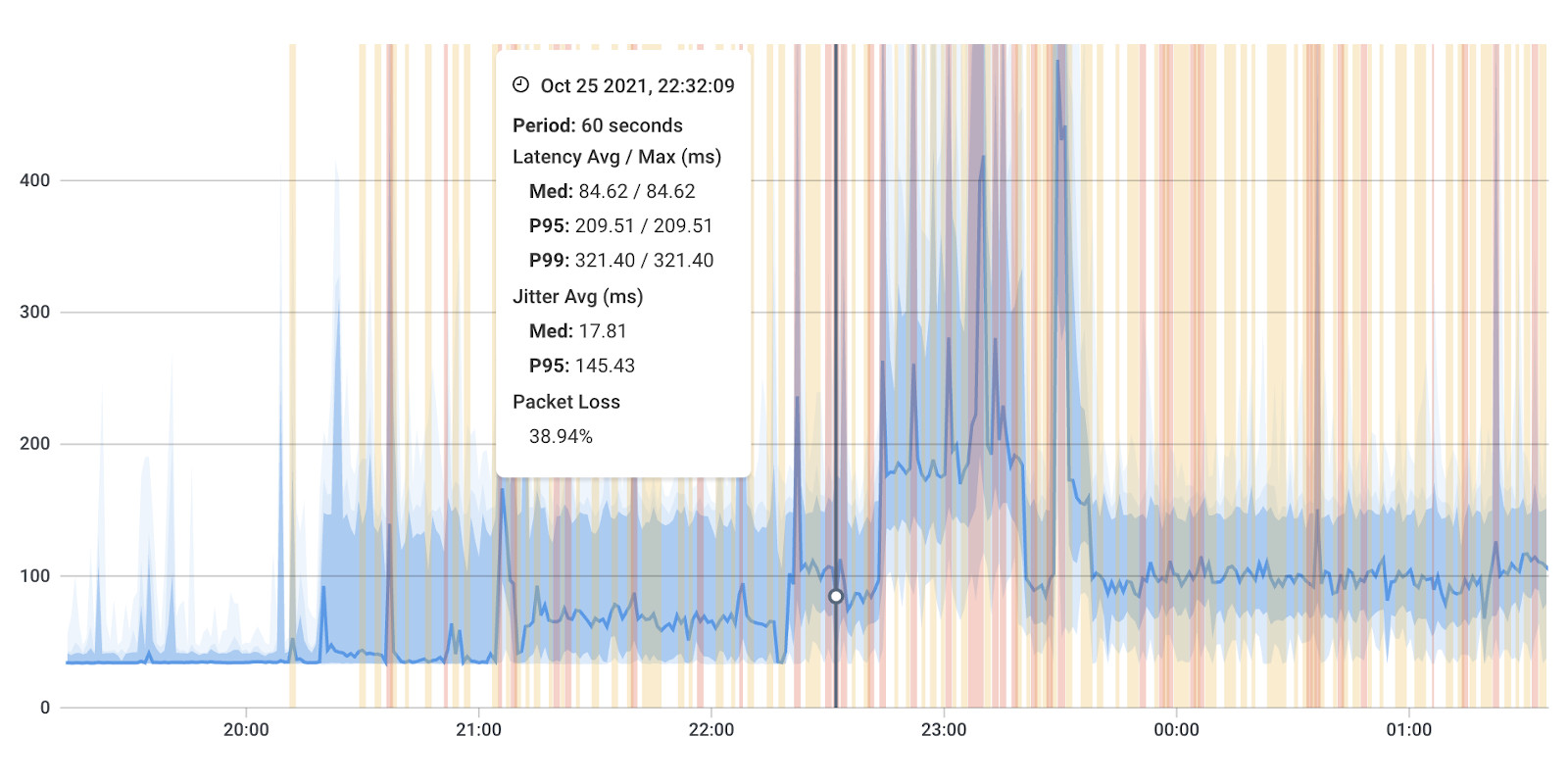
Network performance reports provide insights into the health, efficiency, and effectiveness of a computer network. Different types of network performance reports help administrators and IT professionals monitor, analyze, and optimize network performance. Here are some common types of network performance reports:
1. Latency Report:
- This report focuses on the delay between data transmission and reception. It helps identify if there are delays in communication, which can affect the overall network responsiveness.
- This network performance report is crucial for real-time applications like video conferencing, online gaming, and VoIP (VoIP latency). High latency can lead to delayed responses and poor user experience.
2. Bandwidth Utilization Report:
- This network performance report measures the amount of data being transmitted over the network in a given time frame.
- It helps network administrators ensure that the network is not overutilized, causing slowdowns, and helps identify potential bandwidth bottlenecks.
3. Throughput Report:
- Throughput is the actual amount of data that can be transmitted over the network in a given time.
- This network performance report helps identify the network's actual capacity for data transmission and is important for assessing how effectively the network is transmitting data and if it's meeting the expected performance levels.
4. Packet Loss Report:
- Packet loss occurs when data packets are dropped during transmission. This can degrade network performance and lead to data retransmissions.
- This network performance report highlights the percentage of lost packets, helping administrators identify network issues that might lead to data loss or poor quality of service.
5. Jitter Report:
- Jitter is the variation in latency between data packets. High jitter can lead to inconsistent network performance and poor audio/video quality in real-time applications.
- This network performance report helps identify and address jitter issues and identify which applications are most affected by jitter in your network.
6. Network Health Summary:
- This network performance report provides an overall health status of the network. It might include key metrics such as latency, bandwidth utilization, packet loss, and more, giving a comprehensive view of the network's condition.
- It helps administrators quickly identify potential issues that require attention, making it a useful snapshot for management.
7. Device Performance Report:
- This network performance report focuses on the performance of individual network devices, such as routers, switches, and firewalls.
- It helps identify if any specific devices that might be causing slowdowns or bottlenecks, facilitating targeted troubleshooting.
8. Security Report:
- This type of network performance report focuses on network security metrics, such as intrusion attempts, malware infections, and unauthorized access attempts.
- It helps administrators keep the network secure and respond to potential threats and is essential for maintaining a secure network environment.
9. User Activity Report:
- This network performance report provides insights into how users are utilizing the network resources.
- It can help identify patterns of usage and potential resource hogs.
- It also helps administrators manage resource allocation and identify any users consuming an excessive amount of bandwidth or engaging in inappropriate activities.
10. Application Performance Report:
- Networks often support various applications, each with different requirements. This network performance report assesses the performance of different applications running on the network.
- It helps ensure that critical applications receive the necessary resources and identifies any apps causing network congestion.
11. Uptime/Downtime Report:
- This network performance report tracks the network's availability over time.
- It helps identify periods of downtime and can aid in troubleshooting the causes and is essential for understanding how reliable the network is and for addressing any issues that cause disruptions.
12. Capacity Planning Report:
- This network performance report helps predict future network resource needs based on historical data.
- It assists in budgeting and planning for infrastructure upgrades and expansions to accommodate growing network demands.
13. Incident Report:
- When network issues occur, an incident report provides a detailed account of the problem, its impact, and the steps taken to resolve it.
- This includes a detailed account of the problem, helping administrators understand what happened, how it was resolved, and how to prevent similar incidents in the future.
- This network performance report aids in post-incident analysis and prevention.
14. Trend Analysis Report: This type of report analyzes performance data over an extended period to identify trends and patterns.
- It can help with predicting potential performance issues and planning for improvements.
Remember that the specific types of reports needed will depend on the organization's goals, the complexity of the network, and the critical applications it supports. Monitoring tools and solutions often provide customizable reporting options to cater to specific needs.
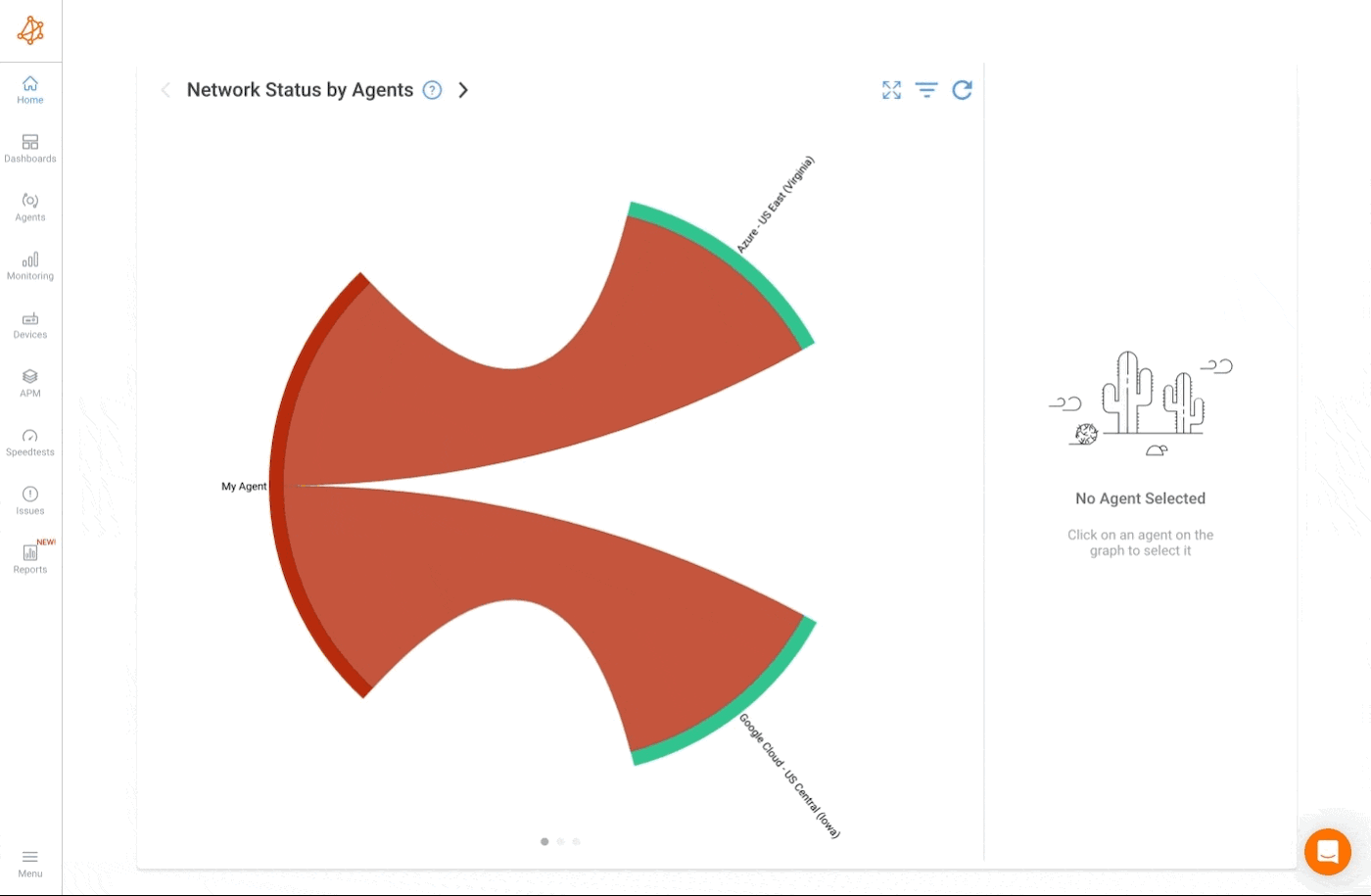

Network performance reports should be used on an ongoing basis as a fundamental part of network management and optimization. Here are some key situations when network performance reports are particularly valuable:
When network problems arise, performance reports are crucial for diagnosing and troubleshooting the root causes. By analyzing the data in the reports, administrators can identify areas of concern, such as high latency, packet loss, or congestion, and take appropriate measures to resolve the issues efficiently.
Network performance reports enable proactive network monitoring, allowing administrators to identify potential performance bottlenecks or degradation before they impact users. Regularly reviewing performance reports helps administrators stay ahead of any emerging issues, enabling them to take preventive actions and ensure a smooth and reliable network operation.
Network performance reports are instrumental in capacity planning and ensuring network scalability. By monitoring metrics like bandwidth utilization and throughput, administrators can assess current network usage trends and predict future demands. This information helps in making informed decisions about resource allocation, network upgrades, and planning for growth.
When implementing network upgrades, architectural changes, or deploying new applications, network performance reports serve as a benchmark to evaluate the impact of these changes on overall network performance. By comparing pre- and post-change reports, administrators can determine if the desired improvements have been achieved or if any adjustments need to be made.
Network performance reports play a critical role in monitoring SLAs between network service providers and their clients. By regularly generating and reviewing performance reports, organizations can verify if agreed-upon performance targets are being met. If there are any deviations or discrepancies, these reports provide the necessary data to address the issues and ensure compliance with contractual obligations.
Network performance reports provide a valuable feedback loop for ongoing network optimization efforts. By regularly reviewing the reports and analyzing performance trends, administrators can identify areas for improvement, fine-tune network configurations, optimize resource allocation, and ultimately enhance overall network performance.
To ensure that network performance reporting is impactful and yields actionable insights, it is essential to follow best practices. These practices help maximize the effectiveness of your reporting efforts and enable informed decision-making for optimizing network performance.
Let's get into the best practices!
- Set Clear Goals and Metrics: Clearly define the goals and objectives of your network performance reporting. Determine the key metrics and performance indicators that align with your organization's needs and priorities. Setting clear goals ensures that your reporting efforts are focused and meaningful.
- Establish a Regular Reporting Schedule: Consistency is key when it comes to network performance reporting. Establish a regular schedule for generating and reviewing reports. This helps create a cadence for monitoring and allows for timely identification of performance trends or issues. Regular reporting also enables you to track progress over time and detect any deviations from expected performance.
- Customize Reports to Specific Needs: Tailor your network performance reports to address the specific requirements of your organization. Consider the information that is most relevant and valuable to your stakeholders. Customize the format, layout, and visualizations to present data in a clear and easily digestible manner. Adapting the reports to your specific needs ensures they provide actionable insights and resonate with the intended audience.
- Foster Collaboration and Sharing: Encourage collaboration among team members by sharing network performance reports and involving relevant stakeholders. Foster open communication channels for discussing the insights, findings, and recommendations derived from the reports. Collaborative efforts allow for collective problem-solving and better decision-making based on a broader perspective.
- Leverage Reports for Continuous Optimization: Use network performance reports as a tool for continuous optimization. Regularly analyze the data and trends to identify areas for improvement. Take a proactive approach to address performance bottlenecks, optimize network configurations, and fine-tune resource allocation. Network performance reports should serve as a basis for actionable changes that lead to ongoing enhancement of network performance.
- Document Changes and Actions: Maintain a record of changes made based on network performance reports. Document any optimizations, upgrades, or adjustments implemented as a result of insights gained from the reports. This documentation helps track the effectiveness of actions taken and serves as a reference for future analysis or troubleshooting efforts.
- Stay Updated on Industry Standards and Best Practices: Keep abreast of industry standards, network monitoring best practices, and emerging technologies in network performance monitoring and reporting. Stay informed about new metrics, methodologies, or tools that can enhance your reporting capabilities. This continuous learning ensures that your network performance reporting remains relevant and aligned with industry trends.
By following these best practices, you can maximize the effectiveness of your network performance reporting efforts. They enable you to capture actionable insights, drive continuous improvement, and facilitate informed decision-making to optimize your network performance and deliver a superior user experience.


Real-world examples of network performance reporting can provide valuable insights into how organizations have leveraged this practice to optimize their network infrastructure and deliver superior performance. Let's explore a few case studies that demonstrate the effectiveness of network performance reporting:
Company X, a multinational e-commerce retailer, faced recurring network performance issues that affected their customer experience. By implementing network performance reporting, they gained visibility into key metrics such as latency, packet loss, and bandwidth utilization. With comprehensive reports, they identified specific areas of their network causing performance degradation and took proactive steps to optimize their infrastructure.
Using the insights from the reports, Company X upgraded their network equipment, optimized routing configurations, and resolved bottlenecks. As a result, they experienced significant improvements in network performance, leading to faster website loading times, reduced customer complaints, and increased customer satisfaction.
Company Y, an IT services provider, needed to ensure their network infrastructure could handle increasing client demands and future growth. Through network performance reporting, they gained a clear understanding of their network's capacity and usage trends. The reports helped them identify peak traffic periods, bandwidth limitations, and potential scalability issues.
With this information, Company Y proactively upgraded their network capacity, adjusted resource allocations, and optimized their network architecture. By aligning their infrastructure with the insights from network performance reports, they not only met existing client needs but also positioned themselves for future growth without compromising performance or service quality.
Company Z, a financial institution, had stringent service-level agreements (SLAs) with their network service providers. They needed to monitor and verify the performance metrics outlined in the SLAs to ensure compliance. Network performance reporting enabled them to track and report on key metrics, such as latency, uptime, and throughput, as required by their SLAs.
By regularly generating and reviewing network performance reports for SLA monitoring, Company Z identified instances where service-level targets were not being met. Armed with this information, they held their network service providers accountable and worked collaboratively to address performance issues and improve the quality of service. The ability to monitor and report on network performance played a vital role in maintaining compliance with their SLAs and ensuring a high standard of service for their clients.
Learn about SLA monitoring & reporting using Network Monitoring to measure network, service performance, user experience & understand if SLAs are being met.
Learn more

Network performance reporting is a crucial practice for organizations seeking to optimize their network infrastructure, deliver exceptional user experiences, and stay ahead in a highly connected world. By implementing best practices, such as setting clear goals, establishing regular reporting schedules, customizing reports, fostering collaboration, leveraging insights for continuous optimization, documenting actions, and staying updated on industry standards, organizations can derive maximum value from their network performance reporting efforts.
Don't settle for guesswork when it comes to managing your network performance!
Obkio's network monitoring tool and network performance reporting feature provide a comprehensive solution to monitor, measure, and analyze network performance. With Obkio, you can easily set up agents, configure performance tests, and generate insightful reports that offer a deep understanding of your network's health and performance metrics. Whether you're aiming to troubleshoot issues, optimize network configurations, or ensure compliance with SLAs, Obkio empowers you with the data and insights needed to make informed decisions.
Take control with Obkio's network performance reporting feature.

Remember, a well-monitored and optimized network is the backbone of your organization's success. Start using Obkio tounlock the power of comprehensive network performance insights.


























 Obkio Blog
Obkio Blog



